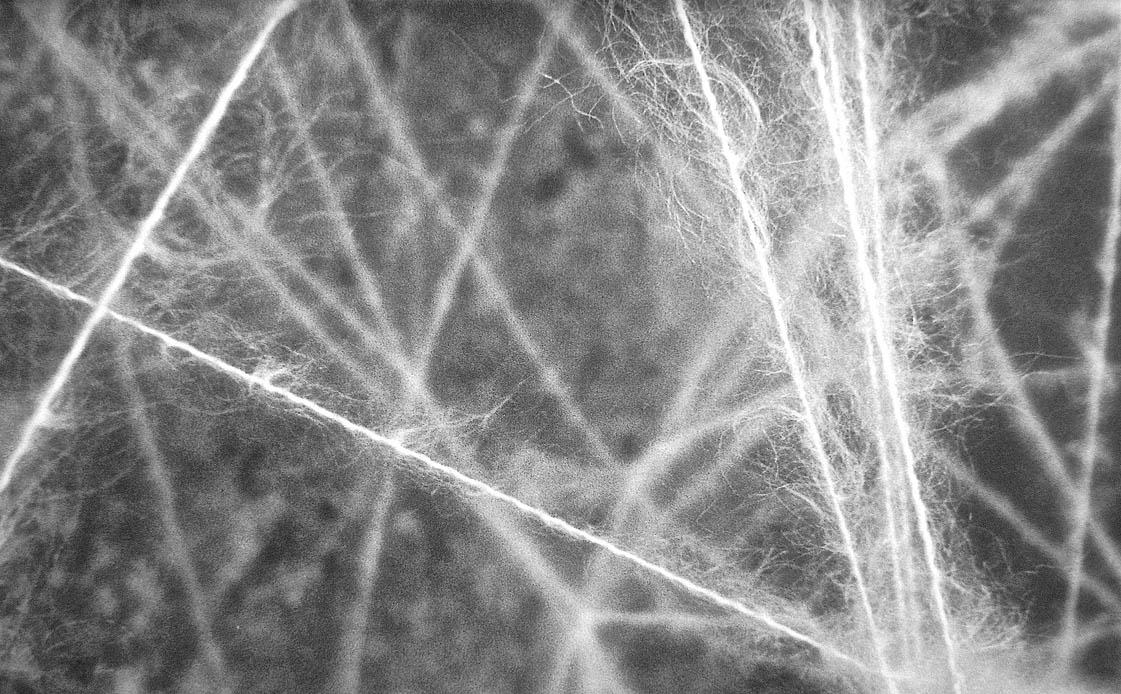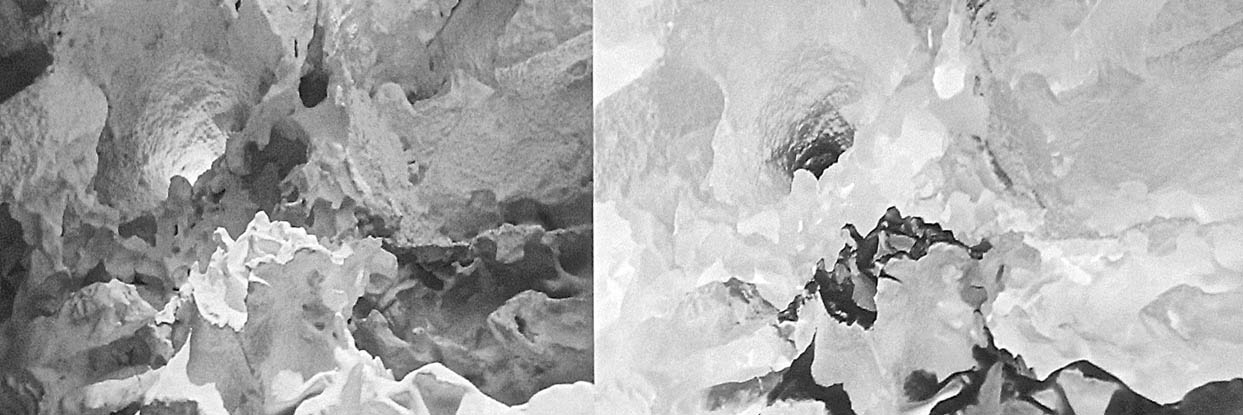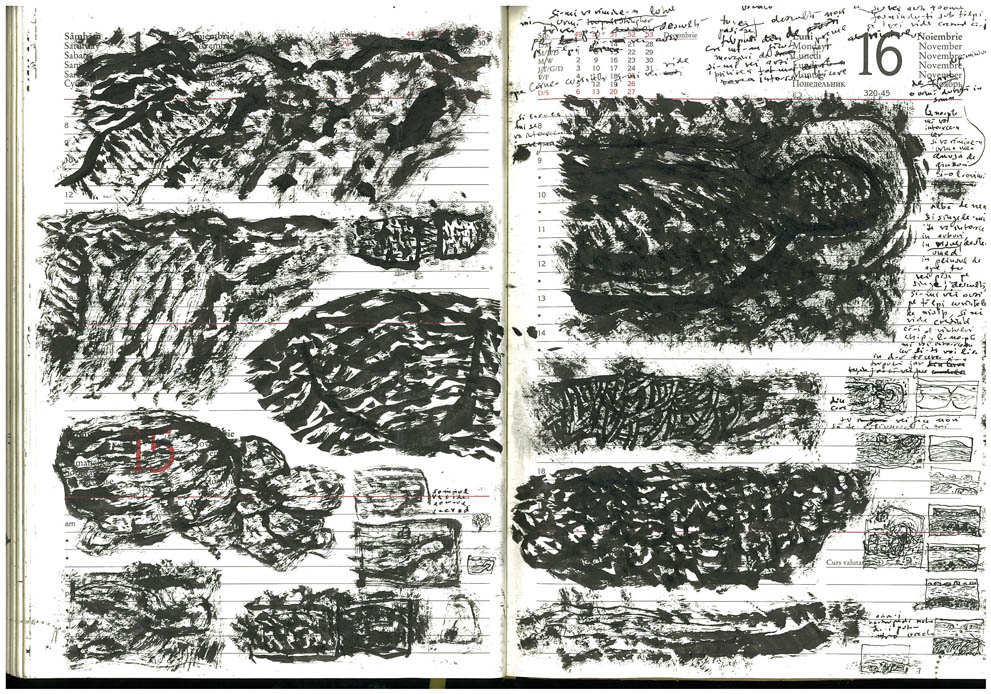Doru O. Comşa EAST FROM THE SUN
isamu noguchi was an outstanding japanese-american sculptor in the 20th century. impressed by the work of constantin brâncuşi, for about

Doru O. Comşa
EAST FROM THE SUN
on reality and other realities
isamu noguchi was an outstanding japanese-american sculptor in the 20th century. impressed by the work of constantin brâncuşi, for about three years he worked in the studio of the great romanian master in paris. brâncuşi’s cryptic way of reflecting life and reality has inspired noguchi for a long time. much later, in the early ’50s, noguchi started creating light sculptures: akari (in jap. bright, easy, basic). they are not lamps: painstakingly made from a filigree metal structure and a traditional japanese paper membrane, they are actually small architectural objects. through the magic of this fine paper, noguchi converts the «cold» electricity in a warm light similar to the sun. the simplest of these light islands accompany our work, and not just ours, for a long time.
for me, a sheet of white paper represents a perennial fascination. it is not only just a blank piece of paper, but rather a small universe of knowledge; it is a simple and subtle receptacle; being empty, it offers infinite possibilities. not all blank papers are the same: some absorb and host light, others – industrial ones – reflect it and miss it completely. this is also, a haptic feeling. the more sensitive we perceive this white, the more we will be able to differentiate light’s intensity. a sheet of blank paper has a special intrinsic tension. it can be easily folded and unfolded. its fragile materiality though seems inadequate to withstand time. it is an analogue support, in an increasingly digital world. could it be just an architects’ nostalgia that binds us to it? or perhaps this little white universe, with countless degrees of freedom and possibilities, is a viable symbol of creativity and culture? to hold a sheet of white paper or have to face it on the table gives me a sense of inner peace. all ideas and thoughts come and fill it smoothly, like snowflakes on a palm. even the small shinto shrines in japan seem like a sheet of white paper: the empty space in their center called shiro, homonymous to the Japanese word white, is open to any possibility. that way, maybe one or another of the millions of their deities may come, sit here and hallow the place. this latent potential is, of course, not limited to deities, it is also a quality of contemporary japanese architecture, which folds in space and time different levels of reality.
for us kids, the true summer vacation was spent at our grandparents’ house and at the seaside. with grandparents, in a small house with a large garden on the hula guşteriţei above sibiu, we used to spend our evenings breathlessly listening stories over stories. grandfather, a mighty man steady as a rock, with clear eyes and a white beard; grandmother, frail and quick as a shuttle. as children, we were convinced that, in their youth, they were really prince charming and snow white. only the castle thing did not quite match. with this impression, we went on to the seaside, where we used to spend hours and hours on the tenuous line between water and land, building sand castles. not like other children, though, playing with small tools, but dripping wet sand through the fingers. miraculously, new walls would appear reaching for the sky, wonderful towers and palaces. they lasted only for a moment, until a new small wave would swallow them completely. here, between the two worlds under a friendly sun, we used to leave everything behind. decades later, still by the seaside but in barcelona, standing in front of the sagrada familia, i remember thinking how witty antoni gaudí’s grandparents must had been. two or three years later, during a joint project of eth zürich and mit boston, we were dealing with «simplicity and complexity» in architecture. among other things, we were interested in the sand’s flow and organization between some extremely fine horizontal planes, through a system of perforations. at onepoint, i had a brief glimmer in my eyes, as they were seeing a different image.
the copernican picture of the world has shown us that we do not see the world «as it is», for it is necessary to discern its reality by thinking beyond the sensory organs’ impression. what we see with our eyes and what the informed astrophysical reason sees are totally different perspectives. that’s the dilemma: when the sun rises, it’s not the sun that rises! maybe this is what einstein’s assistant, the german geo-physicist erwin finlay-freundlich, actually thought. einstein elaborated in 1905 the relativity principle, and freundlich had done everything possible to practically demonstrate with astrophysical methods, the universal validity of this theory. in 1918, he contacted erich mendelsohn, a friend architect still engaged in war actions. the project idea was to capture sunlight in a telescope (heliostat) in the dome at the top of a tower and to redirect it through a system of mirrors, vertically and then horizontally in an underground laboratory. fascinated by the possibility of an architectural expression based on a new way of seeing the world, mendelsohn completed the project 2 years later; the einstein tower was built in 1924 on a hill in a forest in potsdam (near berlin). far from being used just as a strictly functional construction freundlich had asked for, his project had assimilated from the beginning principles of flexibility and semantic criteria, that had to define what he called «dynamism» in architecture. 15 years later, sigfried giedion published its harvard courses collection held under the title «space, time, architecture». mendelsohn and einstein both rejected this famous book, which in their opinion, did not handle seriously neither space or time, therefore nor architecture, being «without any rational basis». first einstein, and after him physics have successively opened their eyes to a much deeper and differentiated understanding of reality. burkhard heim, a german mathematician, proved with extraordinarily complex calculations the simple necessity that the universe consists of twelve dimensions. life in our physical three-dimensional space (x0, x1, x2) plus time (x4), is described by heim as a projection of the spiritual information fields in the immediately above dimension, named organizational space (x5, x6).
consciousness is not a product of matter, but vice versa. a higher consciousness can therefore access these dimensions. quantum physics vacuum is a low energy place, fluctuating around an average rate. therefore, an «empty space» is a space with infinite possibilities. in hyper-space, the (x7) and (x8) dimensions constitute cyberspace. burkhard heim says the highest dimensions (x9, x10, x11, x12) are not reachable to us in present time. could they be what perhaps lucian blaga used to call «transcendent censorship» in the trilogy of knowledge?
at the swiss national exhibition expo 2002, american architects diller + scofidio built on the lake neuchatel place in yverdon-les-bains, a hybrid project called the «blur building». it oscillated between reality and illusion, certainty and enigma, architecture and art installation. a simple metal structure, anchored in the lake, offering at various levels large platforms of one hundred meters in length, with panoramic view. a dense system of micro-jets continuously sprayed the water extracted from the lake, creating a huge white cloud floating mysteriously above the waves. day and night, multiple sensors and various algorithms used to braid, like some invisible hands from the interaction of natural forces (wind, humidity, temperature) and the artificial ones, a wonderful garment of dust water. it is not «we can play god» the message of this project was, but rather an uncomplicated desire to allow visitors in translucent capes to gently touch nature and culture, as in a real dream. two birds, a kind of umbilical cord, brought exuberant people from this white cloud, slowly, back to earth.

carlos castaneda was a south-american anthropologist of high sensitivity. his south american origins and an inner fire guided his research and knowledge to the ancient culture, still alive in the heritage of yaqui indians in mexico. in the sonora region, he would spend years in the company of don juan (matus), a brujo, a sage man who saw the world and other worlds with different eyes. coming from the famous ucla university in los angeles, and versed in anthropology, archeology and psychology, castaneda becomes a novice in the presence of don juan. the latter gradually and with enormous patience enhanced castaneda’s ability to «really see» and not just to look at the world. reality thus acquired a completely different quality: each being is actually held in a cocoon spun from billions and billions of strands of light. it is greater than the physical body (it is not aura!) and connects all beings in the world through these glowing strands. don juan suggests that our everyday perception of reality is actually only one (!) possible aspect of many others possible. a so-called assembly point located behind the surface of this cocoon, that determines through its position what reality is perceived. even a minuscule repositioning of this point could radically change reality. the essential prerequisite to change the position of this point is a very high level of energy of its own. don juan is also conscious of the daily existence of what he calls «energy thieves». and perhaps even for those who have not yet had the opportunity to browse through the books of carlos castaneda, this is intuitively obvious. does this have any connection with architecture?
the 2016 venice architecture biennale had a title-theme like a bird with embers feathers – «reporting from the front». yet few contributions tried to reach her fabulous wings, stretched like a warm welcome. the vast majority of the submitted projects, just like other editions of the biennale hosted by the lagoon city, have tried – with great effort – to tell us nothing. or mostly nothing. an exhibition is an exhibition is an exhibition: that is a place to (re)present architecture. yet, that’s not always the case, especially here and especially now, and we have learnt this from christian kerez (architect) and sandra oehy (curator), in their contribution for switzerland. the incidental space project reflects the presumptive line of demarcation between architecture and architecture exhibition and transforms this research process in the exhibition itself. space is born here out of deliberate and precise correlation of an analogue process (manual, handicraft) and a digital process (3d scan computer synthesis). from various amorphous materials, sand or wax, for example, were modeled into seemingly random structures, which later were cast in plaster. models obtained in the students’ workshop from eth zurich have been peeled, selected, 3D scanned, sectioned and photographed. they represent in many ways an incidental space, in which shape, structure and texture are fully consistent. this space exists at several levels of reality: a ghostly cloud data, as models made of a thin concrete membrane or renderings amplified in human scale. these spaces are not and are not meant to be an architectural project. they are a research project that reflects in a fascinating kind the impetus architecture is able to confer in an interdisciplinary context. i was interested not so much in the immense activity behind this project or in the live perception of these unusual spaces, but in the primordial idea they were born from.
last fall we invited to visit romania 2 japanese architects and 3 swiss architects. we walked for a long, long time, not on tourist lanes, but on a path of heart, through villages and mountains. we encountered all sorts of things, from destroyed forests to people with wonderful souls connected to earth in honor and humanity. my colleagues could not understand the language, yet they understood every message. for our foreign friends, it was for the most beautiful week spent on the road. if romania was a sheet of white paper, we would immediately notice how crumpled it is: by us and others, as well. the positive part is that we also have the power to even it, without the help of any enchanted horse with seven hearts from fairytales. i know switzerland and japan first hand, and not from legends. therefore, i am convinced we, too, can unfold our country’s white sheet of paper. luigi snozzi taught us that architecture has no place in weightlessness, for it is an essential cross point of a responsible material and spiritual culture. therefore we (architects, universities of architecture, unions of architects) have to undertake this unfolding mission possible, so to speak, in «pole position».
 Romană
Romană English
English


